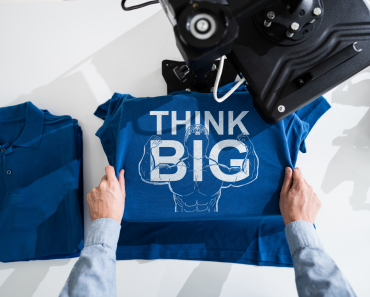The term “T-shirt paper” is used to describe this type of transfer paper because it’s frequently used to transfer pictures, text, or a mix onto clothes. The applications are not limited to T-shirts, and the paper may be used on tablecloths, cotton bags, pillowcases, and even hard surfaces like wood.
If you’re seeking details on how to apply iron-on transfer paper, we’ve compiled a useful handbook that summarizes some of the material on the topic.
Suitable Printer Inks
Users who are new to the process may be perplexed if their home (or company) Inkjet printer accepts the paper. This fear is unjustified since regular inks will operate just as well. The key to the transfer procedure is contained within the paper rather than in the ink, so there’s no need for one printer or one ink over another as long as you’re using an Inkjet printer.
Transfer Paper With a Light and a Dark Side
It’s critical to choose the correct paper for the colour of the substrate you’ll be printing on. In general, images printed on Light Transfer Paper will give a bright and accurate picture on white and light-coloured fabric. Ink is translucent and can only be seen if it’s applied to a white or very light-coloured background.
Dark fabrics necessitate the use of the Dark Transfer Paper, which is made using a white background and blocks the colour of the substrate from seeping through the ink. Block images or photos in which the white areas may be simply excised as they will appear on the shirt after it has been finished with are generally chosen. Here’s more information regarding light vs. dark transfer paper.
Before Printing, Reverse the Picture
It’s a widespread mistake (and an expensive one as a result of the paper’s cost) not to reverse the image before transferring it, where required. When using light transfer paper, you must reverse the picture and print it in mirror mode. The design is applied face down to the garment, and when the process is finished, it will seem the correct side up.
When using dark transfer paper, the image is placed face up on the shirt before transferring it, so there’s no need to reverse it. If you skip this step, your photos will be printed backward. It’s simple to reverse an image using several methods that we’ve previously taught you how to do so with a variety of tools.
If you’re not sure whether your project was a success, try printing it on regular printer paper first.
Washing the Clothing
It all boils down to how well the transfer was performed and how efficiently you follow the provided washing instructions.
When washing, turn the garment inside out so the design or text does not drag against other garments in the machine. Next, choose a 40-degree wash with a full spin cycle. The majority of fabrics can be hand washed up to 15 times before they begin to lose their colour and become faded. It’s vital to remember that bleach-containing washing detergents will cause the illustration to fade rapidly.
Avoid these Mistakes
Iron-on transfer paper can be a headache to work with, and even expensive mistakes may result. Avoid the following common blunders:
- Forgetting about how to reverse the picture
- Using the non-coated side of a sheet
- Use an iron on a surface that isn’t solid, like a table or worktop (use a table or worktop).
- An iron that is not hot enough
- Not ironing for long enough
- Ironing without applying enough force

